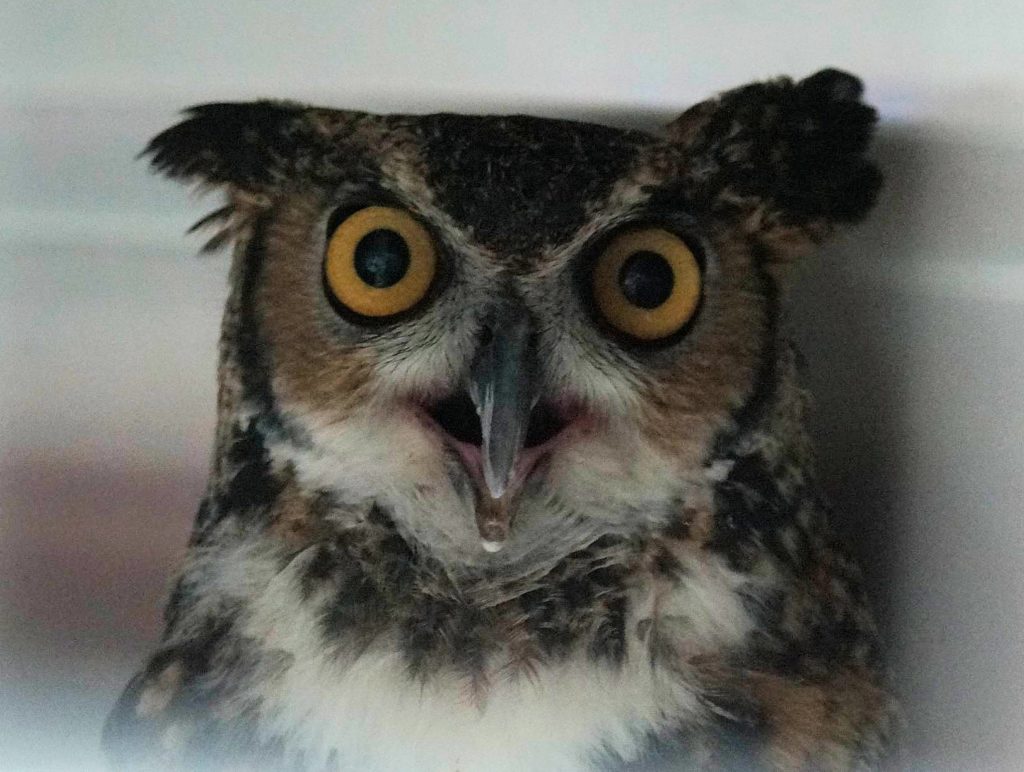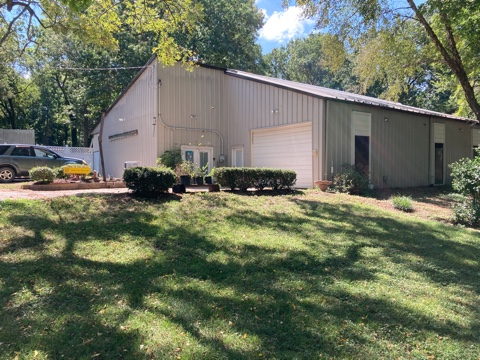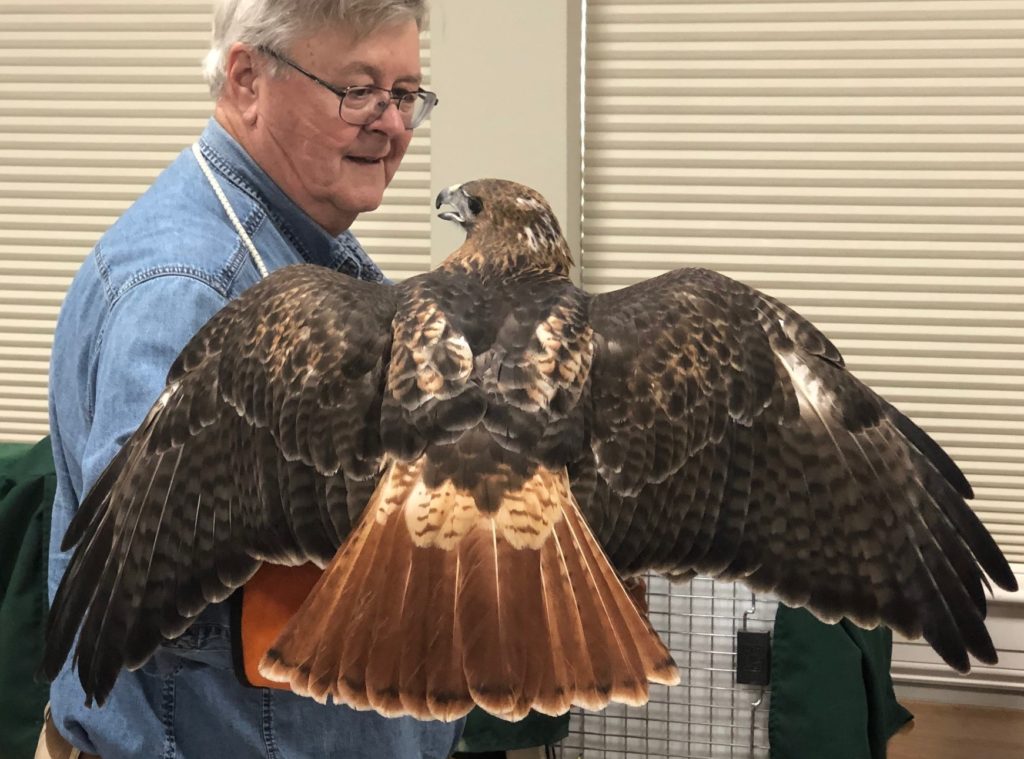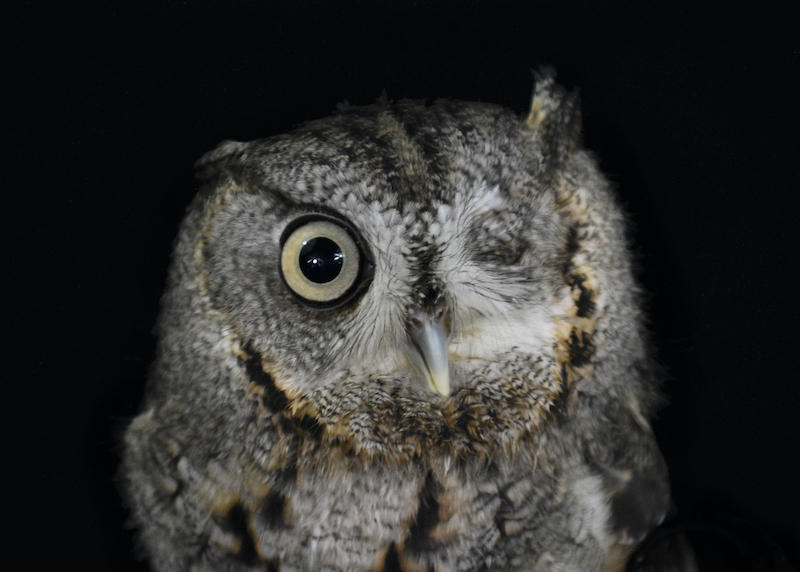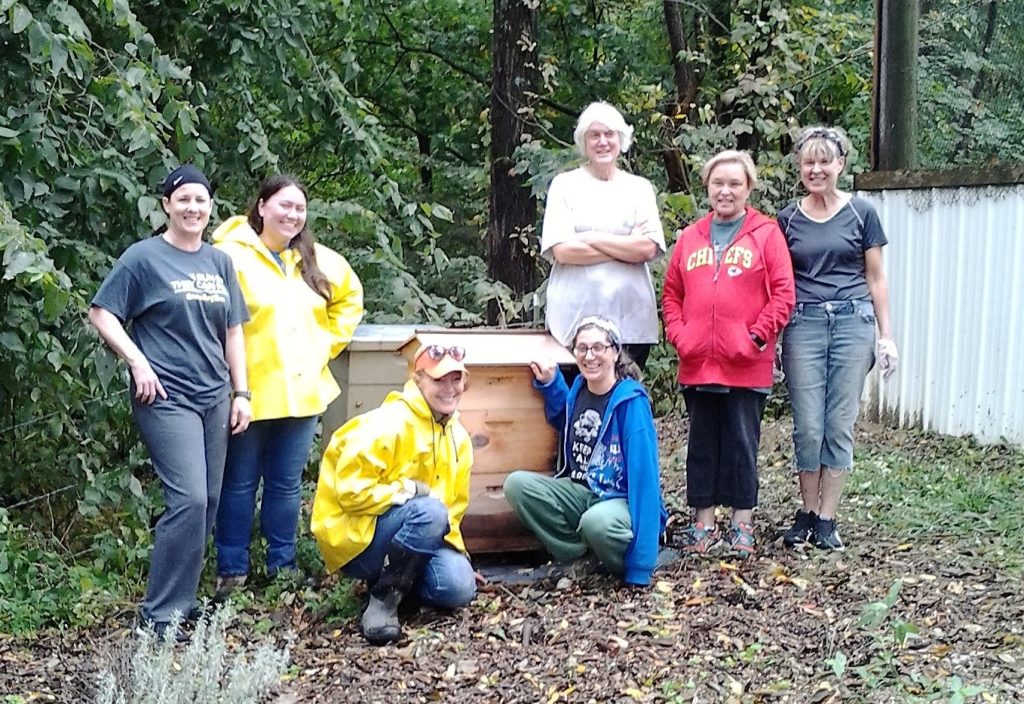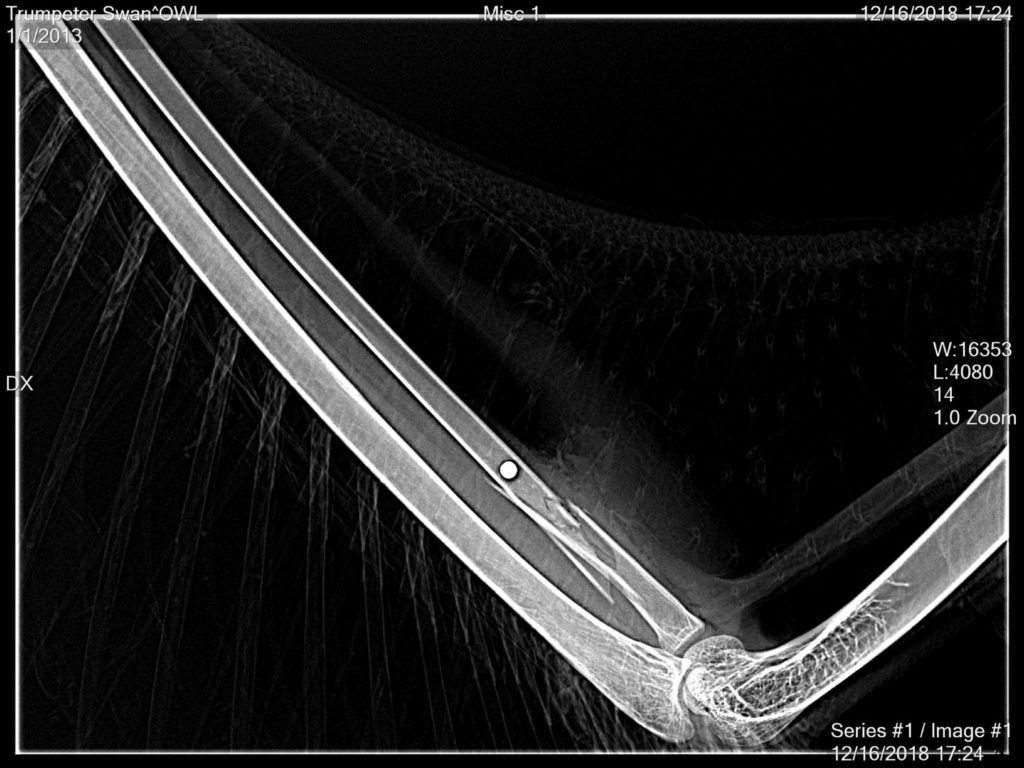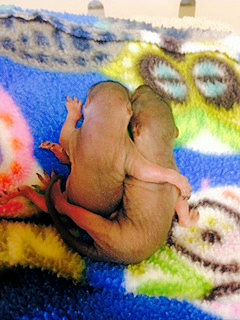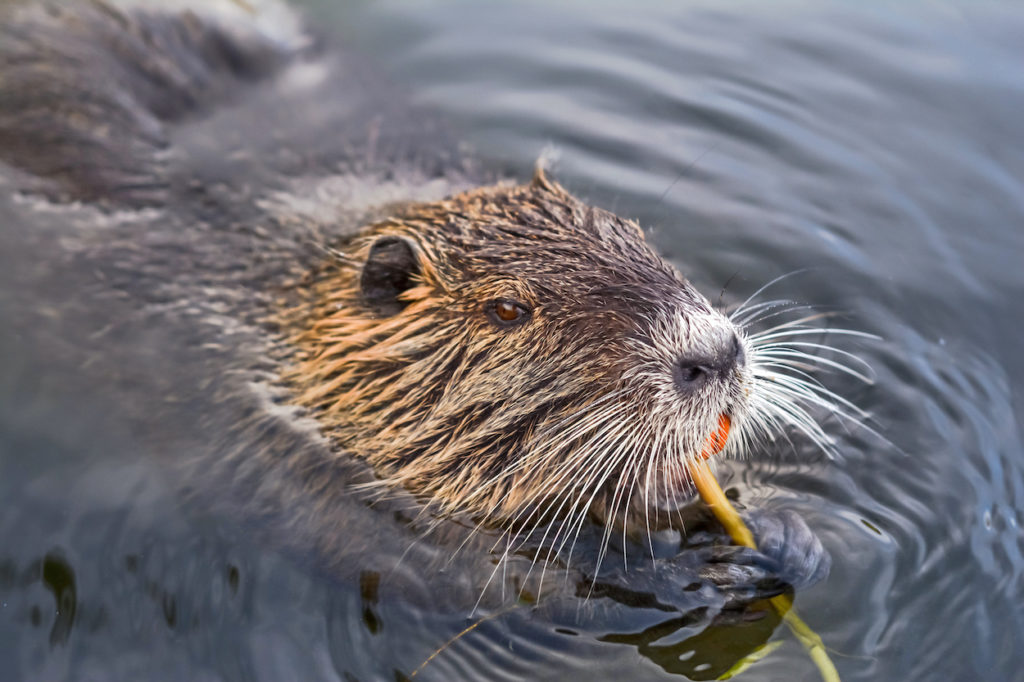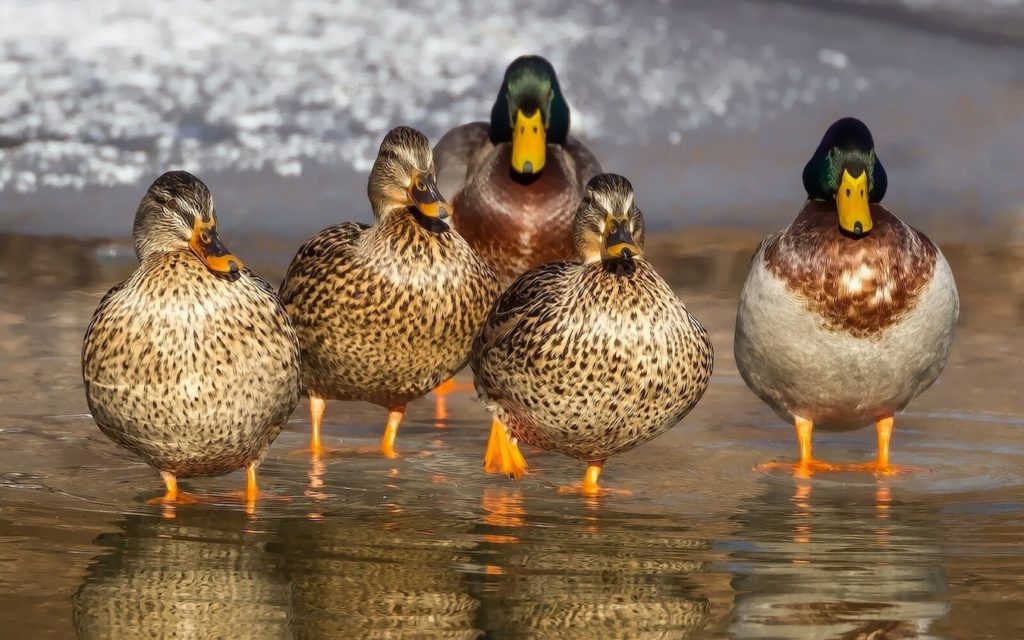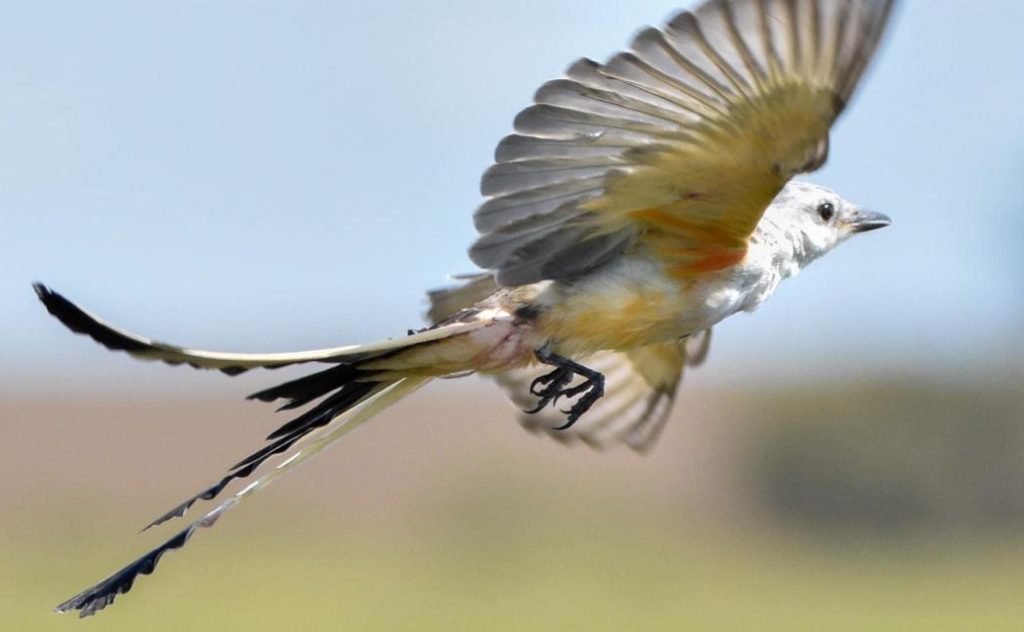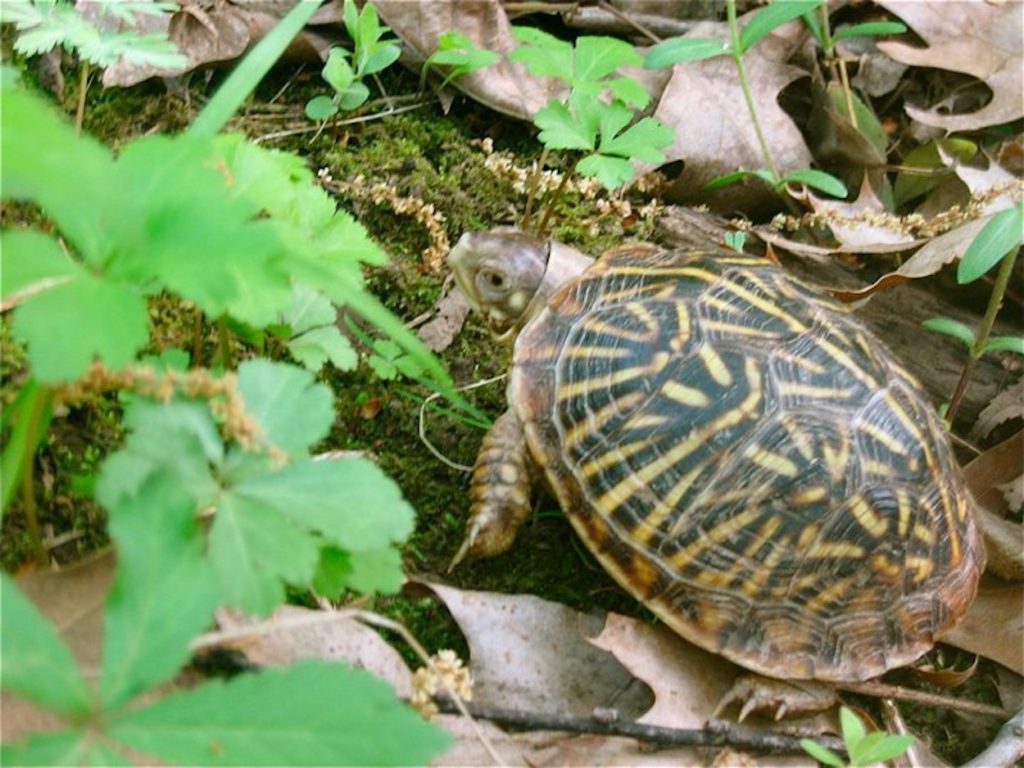About
Raccoons
Raccoons have adapted and probably even profited by human encroachment on their habitat. Their opportunistic and intelligent nature has helped them flourish in suburban and urban settings. Still, there are some challenges in this co-existence with people. First, raccoons don’t have good manners and are prone to leaving garbage strewn across driveways/yards while sifting for treats. Annoying habits such as these result in calls to OWL. Secondly, raccoons can carry diseases harmful to people and pets. In the natural world, raccoons snare a lot of their meals in the water. These nocturnal foragers use lightning-quick paws to grab crayfish, frogs, and other aquatic creatures. On land, they pluck mice and insects from their hiding places and raid nests for tasty eggs. Raccoons also eat fruit and plants—including those grown in human gardens and farms. They will even open garbage cans to dine on the contents. They may inhabit a tree hole, fallen log, or a house’s attic. Females have one to seven cubs in early summer. The babies are born furred and blind and similar in size to domestic kittens. Their eyes open at three to four weeks, and by eight weeks, the kits are nearly one-third grown. They are weaned at 10 to 12 weeks and begin traveling with their mother at this time.The young raccoons often spend the first two months or so of their lives high in a tree hole. Later, mother and children move to the ground when the cubs begin to explore on their own.
Rabies Vector Species – Special Handling Required – Call us immediately so we can help you with a decision about this animal
NOTE: The raccoon is classified as a rabies vector species (RVS), which means it’s an animal that can carry and transmit rabies. Technically, any mammal can do so, but raccoons are a higher risk. Thus, the animal is subject to certain laws by the state. Raccoons can carry rabies without exhibiting any signs of the disease.
They are contagious to other susceptible animals. Because of this, their offspring can be born with the disease as well.
OWL does not accept raccoon babies for walk-ins – special permission via the director is required.
They are also notorious for having canine distemper which is transmittable to a host of other animals. There is no cure for this disease and the incubation period is 2 weeks. We may or may not have quarantine space available depending on the number of raccoons we are currently housing.
Caution should be taken whenever handling any raccoon, no matter what age or how docile. Accidents can happen and even a non-aggressive nip that breaks the skin is a death sentence since animals must be tested even if they show no outward signs of rabies.
The animal must be euthanized for rabies testing and the only way to diagnose rabies is by examination of the animal’s brain. Humans that have been exposed have a 99% fatality rate if not treated quickly. It is best to avoid direct contact, and let professionals handle them. Tests are expensive, and treatments are painful. Your county health department is responsible for having the animal in question tested. Animal control should also be called and the raccoon should be transported as soon as possible because of the health risks and difficulty of keeping them contained.
Distemper: Raccoons can carry both the feline and canine forms of distemper. While this is not transmittable to humans, it is fatal to the animal, and OWL can help provide a humane passing and cremation services for affected animals. These are also diseases that your pet can contract. Make sure your pets are current on their vaccinations if they have been in contact with a raccoon.
Raccoon Roundworm: Raccoon can carry a parasite called Baylisascaris procyon, which can infect humans. It is also called raccoon roundworm. Raccoons do not exhibit clinical signs of infection, but it can kill humans if left untreated. Therefore, it is extremely important to be careful around baby raccoons and not attempt to raise them yourself. In the Midwest, approximately 59% of all raccoons test positive for Baylisascaris.
Baby raccoons – To rescue or not to rescue
Baby raccoons can survive on their own when they are about the size of a football. Mother raccoons will begin bringing them down from denning areas in June/July when they weather gets hotter. She will often leave them unattended under bushes, near trees or sometimes against concrete foundations.
Adult raccoons should only be captured and transported by experienced, vaccinated OWL volunteers or Animal Control officers. These animals can be VERY DANGEROUS.

Babies
The babies are born furred and blind and similar in size to domestic kittens. Their eyes open at three to four weeks, and by eight weeks, the kits are nearly one-third grown. They are weaned at 10 to 12 weeks and begin traveling with their mother at this time.
Babies uncovered in outdoor dens should be left alone if they appear healthy. Mom will come back and move them if the den has been damaged beyond repair. Babies found in an attic or basement should also be left alone to allow the mother to finish raising them and then make the necessary repairs after she has exited with them. You may also purchase a product called Raccoon Eviction fluid, 2 packages of tennis balls and (6) 15-20 foot lengths of rope and 6 large screws. Attach the rope to the tennis ball with the screw. Soak the tennis ball in Raccoon Eviction fluid and toss it into the areas of the attic that the mom and babies are living in. The other end of the rope needs to be at the attic opening so you can pull the tennis ball back to you if you need to reload it with the fluid. Raccoon Eviction fluid is made from male raccoon pheromones and the mom is tricked into believing that there is a male raccoon in the attic that might harm her babies and will relocate them. See below for more information on how to get raccoons to leave your attic.
Baby raccoons should be scooped up in thickly layered, ravel-free towels and placed in a cardboard box or pet carrier. Depending upon the age of the baby, masking tape or duct tape may need to be used to keep secure. OWL does not accept raccoon babies for walk-ins – special permission via the director is required. They are notorious for having canine distemper which is transmittable to a host of other animals. There is no cure for this disease and the incubation period is 2 weeks. We may not have quarantine space available depending on the number of raccoons we are currently housing.
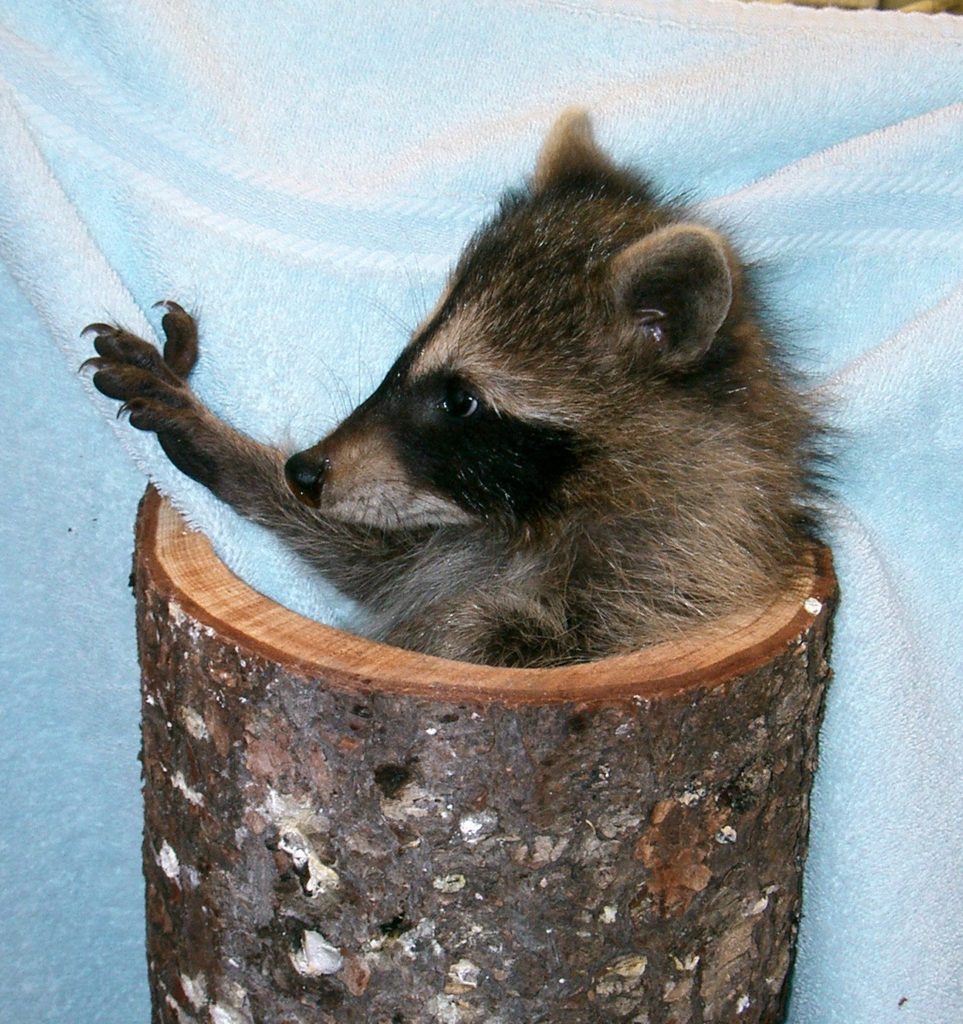
Reuniting the raccoon with its mother
Sometimes baby raccoons can get separated from their mother. If the babies aren’t injured, getting them back to their mom is the best possible option. Raccoons are excellent mothers and will come back for their babies if given a chance! They will also take much better care of their babies than any human possibly could.
Place the box with the raccoons (and heat source) as close as possible to where the raccoon was found.
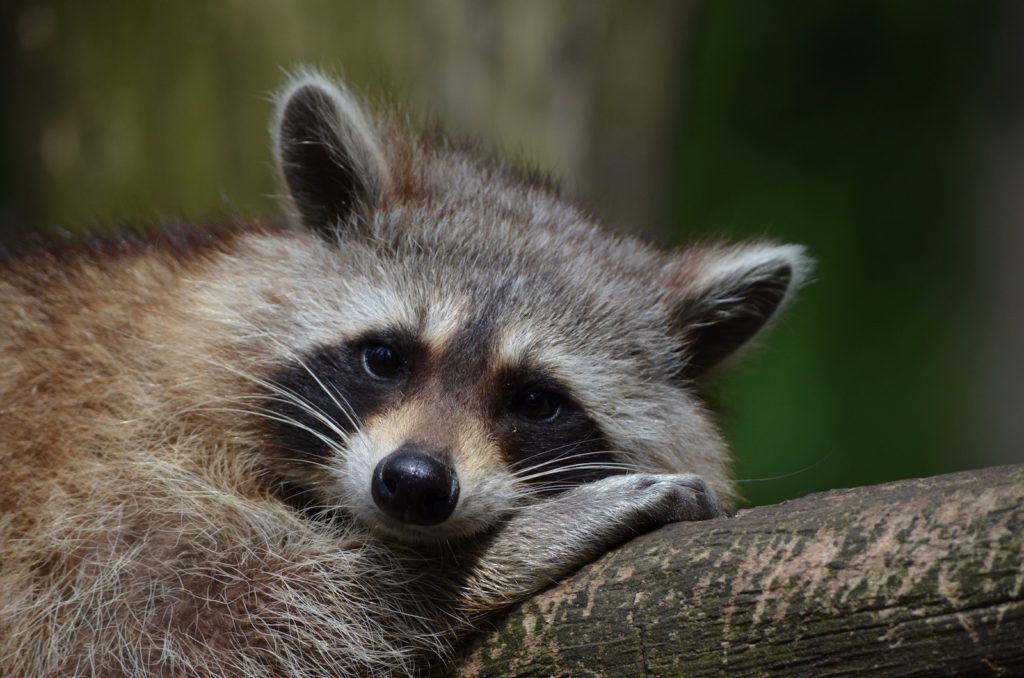
Be patient
When a nest has been disturbed like this, we know that the mother raccoon is still nearby. She might be too frightened to come back right away, especially if people are still in the area. Baby raccoons should be left out for one whole overnight period to see if their mother will come back — raccoons are nocturnal, and most likely to come looking for their babies at night. Make sure to KEEP THEM WARM – refresh the heat source as needed.
Do not give the babies anything to eat or drink. Besides causing other potential problems, we want the babies to be hungry. If they are hungry, they will cry, and the cries will call their mother.
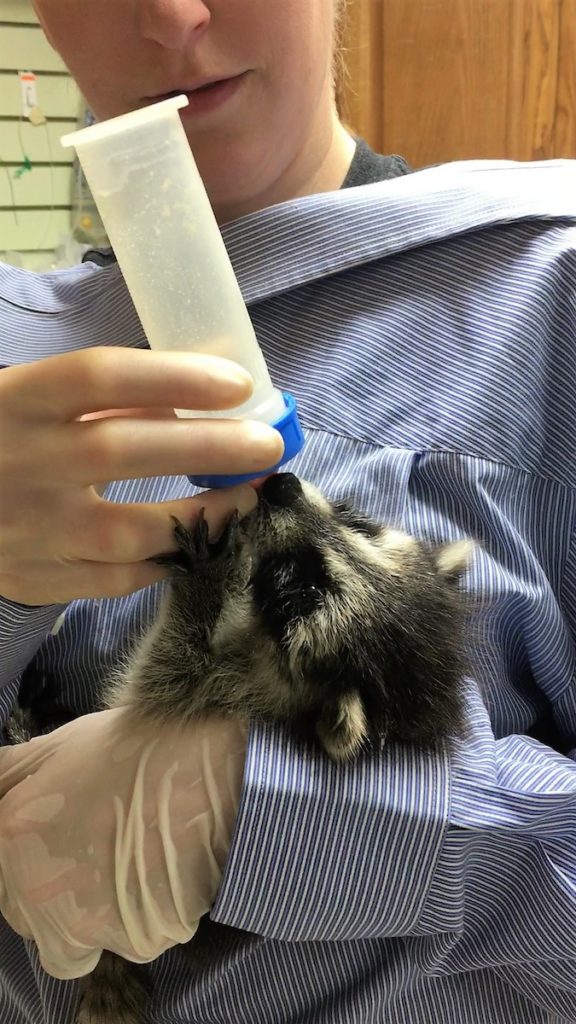
What if it is a busy area?
In high traffic areas, you can put a sign on the bin to let other people know that the raccoon is waiting for its mother. In busy areas, it may make more sense to bring the baby inside and keep it somewhere dark and quiet for the day. As soon as the sun starts to set and traffic dies down, get it outside right away. No matter what, make sure to leave baby raccoons out for their mother for at least one whole overnight period.
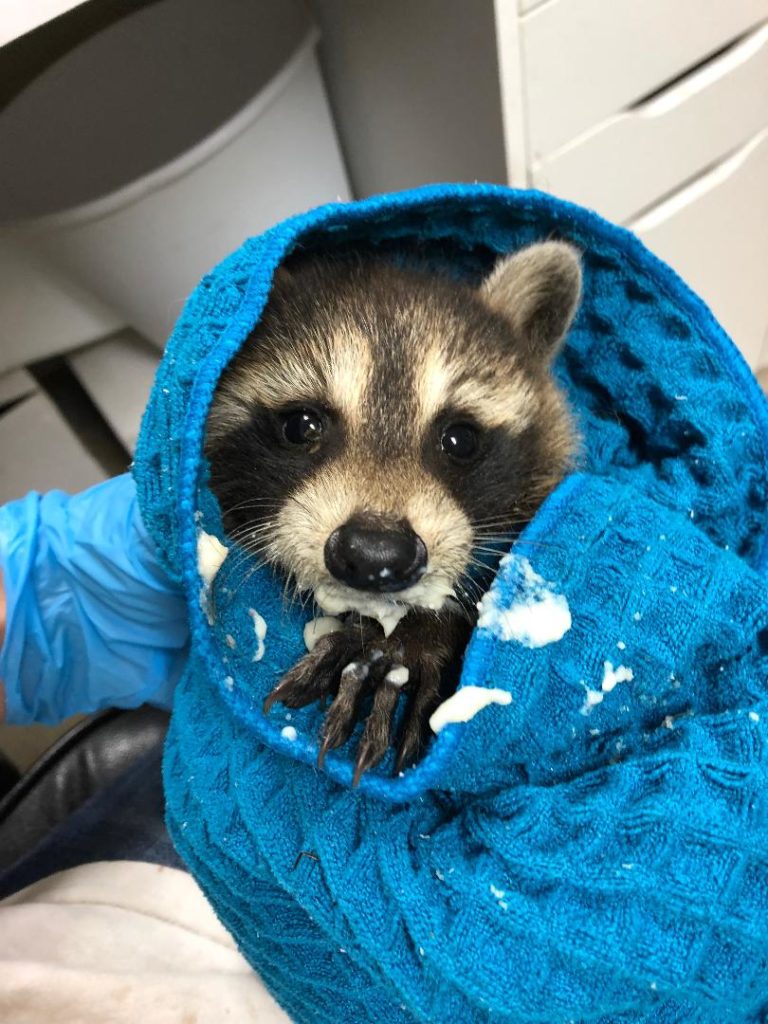
What if the baby keeps crawling out of the box?
Older baby raccoons may not stay in the box you put them in. For these babies, cover them with an upside-down laundry basket. Put a brick on top of the laundry basket to keep it in place. The mother raccoon will have no trouble flipping the basket over to get her baby out.
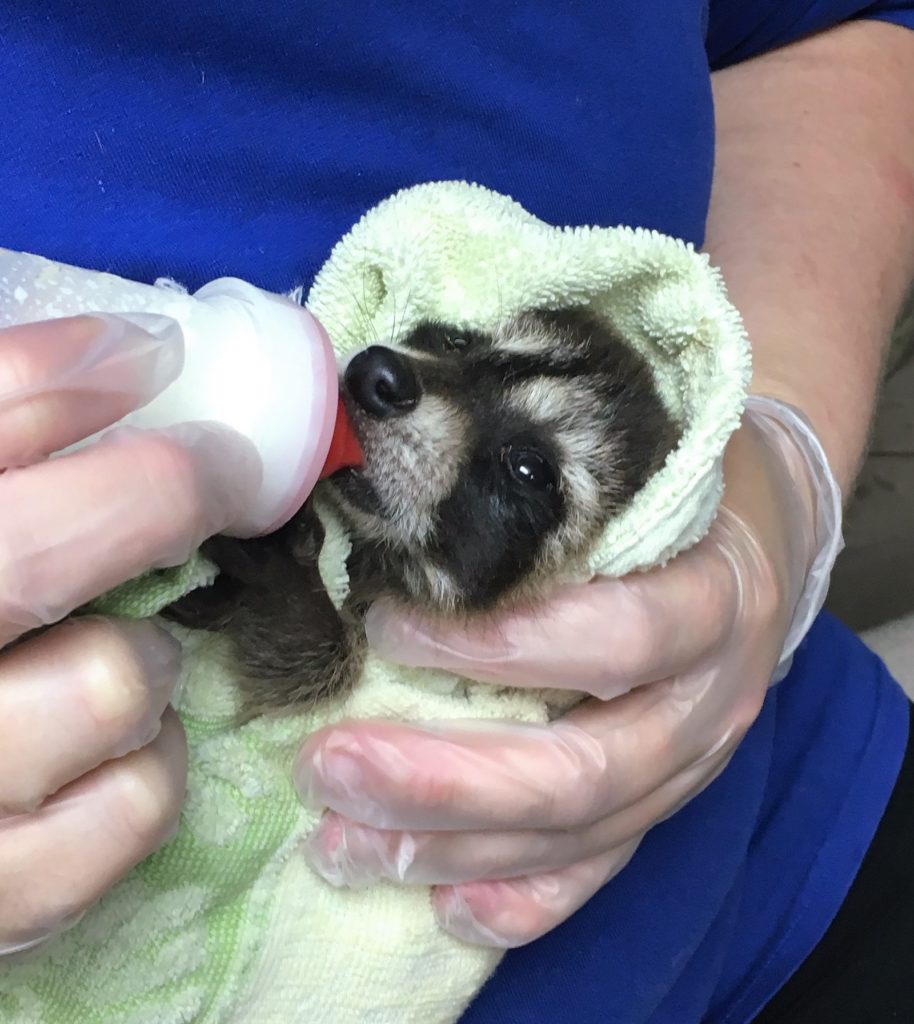
What if it is raining?
If it is raining lightly, cover half of the box with a piece of cardboard. If it is raining hard, bring the baby inside and keep it dark and quiet and warm. Put it back outside as soon as the weather clears up a bit. A mother raccoon will not be looking for her babies during a heavy rain.
OWL does not accept raccoon babies for walk-ins – special permission via the director is required. They are notorious for having canine distemper which is transmittable to a host of other animals. There is no cure for this disease and the incubation period is 2 weeks. We may not have quarantine space available depending on the number of raccoons we are currently housing.
Signs of a true orphan
If you notice any of these issues, contact OWL as soon as possible:
- Mother found dead
- Weak, lethargic, and cold
- Covered with parasites
- Dehydrated (do “pinch test”)
- Emaciated
- Crying, screaming and moaning (raccoons are very vocal).
- Please do not feed the raccoon baby or give it anything to drink. Raccoons require a special formula with additives that cannot be purchased over the counter. They also need to be rehydrated for 24 hours with clear fluids before they are fed anything at all. In addition, if fed incorrectly, they can aspirate, which causes pneumonia.
Common Concerns
Mother raccoons are single parents and raise the babies by themselves. They may be out during the day foraging for food or seeking water – this is normal.
If you do see a raccoon out during the day, take a moment to observe what the animal is doing. Is the animal well kept, clean looking, and not acting drunk or disoriented? A raccoon that is out during the day should be clean, shiny looking, and should be in a hurry. It should be acting as though it has purpose – not aimlessly walking in circles or lying in the middle of an open area not even trying to hide or look out for predators. This behavior is not normal and requires more investigation.
A raccoon who is out during daytime, aimless, drunken, walking in circles, sometimes with nasal and ocular (eye) discharge is likely ill. Keep children and pets to away and warn your neighbors to do the same. It is important to make sure pets are current on their distemper vaccinations. Distemper is an airborne virus that it is extremely contagious.
The easiest way to keep raccoons out of garbage is to keep garbage cans in the garage until the morning of pick up. If cans must be left out overnight, or are kept outside all the time, purchase cans with locking lids or secure with bungie cords.
Do not leave pet food bowls outside for cats and dogs, you are inviting opportunistic raccoons to dinner. The only way to prevent raccoons (and other animals) from eating the food is to feed pets indoors or outside during the day only, removing the food at dusk. Relocating animals when free meals are around will not solve problems. New animals will find their way to the free meal and the cycle will never end. Keep in mind that food supply is directly proportional to litter size. When a food source is regularly available, it weakens the species by creating individuals who lack proper hunting and foraging skills.
Raccoons find these spaces useful and may take up residence. During summer, it is especially important to force the raccoon to vacate on its own. Use lights, loud radios, and ammonia-soaked rags to make the area unappealing – also see our information on Raccoon Eviction fluid. There may be a litter involved. If you have raccoons in your attic or under your porch, do not trap and remove them until you are sure the babies are old enough to survive on their own. Babies always do better with Mom and raccoons are one of the most expensive animals to rehab costing between $ 250-$ 500 each. Allow time for a family to relocate to a new home site and the young to be moved. Wait until all signs of the raccoon (and family) are gone and then block the entry to prevent future homesteaders from moving in.
If you have animals in your attic, 99% of the time the animal is a mother, preparing to give birth, or already nursing her young. Most mothers choose a spot to rear young during January through May and give birth 30-60 days later. Average litter sizes are 3-6. Most babies are born completely helpless, eye still shut, barely fuzzy, and unable to maintain their own body temperature. Mom can stay with them up to 23 hours per day during the first week.
If you HEAR or SUSPECT something living in the attic, and it is NOT the DEAD OF WINTER, please assume that there are babies present! This is the #1 mistake that people make when trying to evict animals! Trapping Mom and ‘relocating’ or ‘removing’ her only to find four babies a couple days later is heart wrenching and it is why we raise so many orphans per year. If you set a trap in your attic and catch ANYTHING – please check everywhere in the attic for babies before releasing the trapped animal.
There are many reasons to attempt to evict animals from your attic yourself:
- It’s simple, effective, and low-cost to free compared to pest control companies that cost at least $200 to take on an attic job. All you must do is make time.
- Pest control services in Kansas have rules that they must either:
- Euthanize
- Relocate the animal at least 10 miles from human habitation with written permission from the owner
- You will have to repair the entry holes yourself or hire another company to do that.
- You have much more incentive to do this work correctly the first time than a company who depends on your repeat business!
- Plus – It’s EASY! No traps required, no bait, no heavy leather gloves, or animal handling experience.
Steps to Evicting Animals from Attics
- Determine the species of animal that is inhabiting the attic. To do this follow these steps. During day light hours, pop your head up into the attic (We promise that no one will attack you! Just don’t try to be sneaky about it and make some noise.) and look for areas in the attic where light is getting in. Those spots are your trouble areas. Around dusk, grab a lawn chair, a good book and sit somewhere outside where you can see those spots. If it’s raccoons, you will see Mom leave sometime right after dusk. If it’s squirrels, you will see Mom come HOME around dusk. If it is bats, you’ll see a steady stream of them leaving every night around dusk.
There are three main things that animals need to survive ~ water, food and shelter. Your goal is to disrupt that cycle to get them to move on to a different location.
Sound ~ hook up a stereo and play deep heavy base, rock music or talk radio as LOUD and LONG as you can.
Smell ~ Cayenne pepper sprinkled heavily in the attic will also act as a deterrent. DO not put it on the babies or in the nest.
Ammonia ~ Soak 5-6 rags or socks in ammonia (unscented ). Seal the bag and poke holes in the bag with a knife or fork. This allows the scent to get out of the bag. Place the bags in each corner and one in the middle or if you know where mom hangs out concentrate the bags into that area.
Sight ~ Put up motion detecting lights or if you have a lit attic leave the lights on 24/7. Wild animals like to feel safe and in the dark
Patience – Usually within 48 hours mom will begin to get annoyed with the interruptions of her home. She will leave to seek out a new denning area to move her litter too. DO NOT BEGIN REPAIRS QUITE YET. She can only move one baby at a time and depending on where she is moving them it may take her several days because it’s a labor-intensive effort.
Repair – Wait 24-48 hours and then fix EVERY possible entry point in the attic except for one. Leave one hole open for them to use to get in and out just in case. Tightly stuff newspaper in the last entry hole. Leave it for another 48 hours and if it isn’t disturbed seal the entry.
DO NOT START A FIRE TO DRIVE THE RACCOON OUT! Babies can not climb and will asphyxiate and die of smoke inhalation.
Use the same techniques listed above to encourage the raccoon to take her kits and move on. Walk around the house and check for low limbs. Chances are this is how the raccoon has gained access. Limbs should not be trimmed until the raccoon has moved out. If you remove the limbs before the animals relocate, it is likely they will be trapped (possibly with a small family). After the raccoon/family has vacated, cap the chimney and secure vents to prevent future occupants. If you must remove them from your chimney, and you have already capped it, you can place the babies outside at dusk for Mom to retrieve them. They need to be warm and in a shallow container. Place the container at the spot that Mom uses to gain access to the chimney. She should retrieve the babies and take them elsewhere. If she does not retrieve the babies or leaves some behind, contact OWL as soon as possible.
Placed a 2” x 4”, tree branch, or a rope into the dumpster to provide a ramp for the animal. If the raccoon is still in the dumpster the next morning, call OWL. During the day, check on the and if weather is hot, provide water in a shallow dish.
The First Treatment for Shock or Injury: Warm, Dark, and Quiet
If you find an animal that is injured or truly orphaned, the most important thing you must do is to keep them warm and quiet. Follow these protocols.
You should take caution whenever handling any raccoon, no matter what age or how docile. Accidents can happen, and even a non-aggressive nip that breaks the skin can be a death sentence.
Container
Put baby in a shoebox or other small container with several small air holes in the lid and a small non-terrycloth towel, fleece cloth, or t-shirt in the bottom. Tape the lid to keep secure.
Adults need to be contained in a dog or cat kennel.
Heating Pad
If you have a heating pad, set to low and place the box half on/off the pad, so babies can move away from the heat if they need to. OR
Rice Bag
You can also fill a sock or knee-high pantyhose with uncooked dry rice. Microwave the rice-filled sock for 30 to 60 seconds. This heat source will last about 20 to 30 minutes. Place the rice sock in the container under the towel, and place the baby on or near it, but not directly in contact with the rice sock. OR
Ziploc bag
Fill a Ziploc bag with warm (not hot) water, put it inside another Ziploc bag, and place under the towel next to the baby. The double bag guards against leaks and prevents the animal from getting wet and chilled.
Food/Water
Do not attempt to feed or give them anything to drink. Keeping the baby warm is more important than feeding it. Raccoons require a special formula with additives that cannot be purchased over the counter.

transport
Proper transport
Adult raccoons should only be captured and transported by experienced, vaccinated OWL volunteers or Animal Control officers. These animals can be VERY DANGEROUS.
You should scoop up baby raccoons in thickly layered ravel-free towels and place them in a cardboard box or pet carrier. Depending on the age of the baby, you may need to use masking tape or duct tape to keep raccoons from contorting their way out. Always wear gloves and wash your hands.
You should transport raccoons as soon as possible because of the health risks and difficulty of keeping them contained.
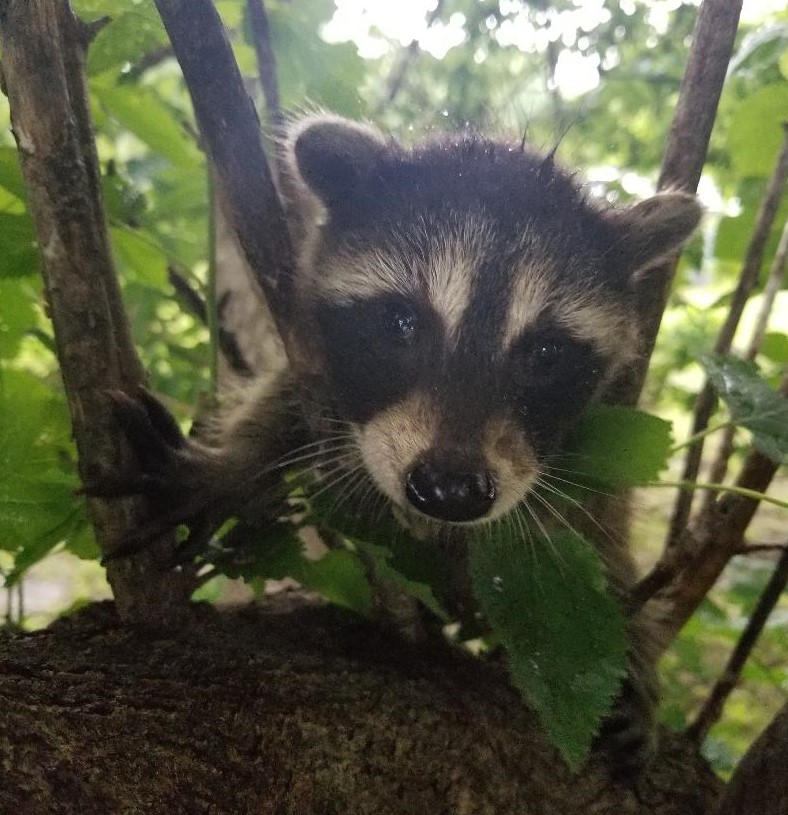
Contact Operation WildLife for help.

